China's grim history of industrial accidents
- Dec 21 2015
- China
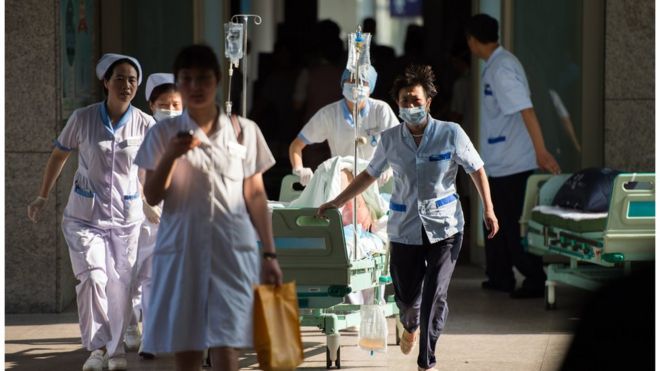 Getty Images
Getty Images
The mudslide disaster in Shenzhen is the latest in a long history of industrial accidents in China.
Here are just a few of those to have hit the country, from recent tragedies to disasters from previous decades.
Shenzhen mudslide, Shenzhen, Guangdong Province, December 2015
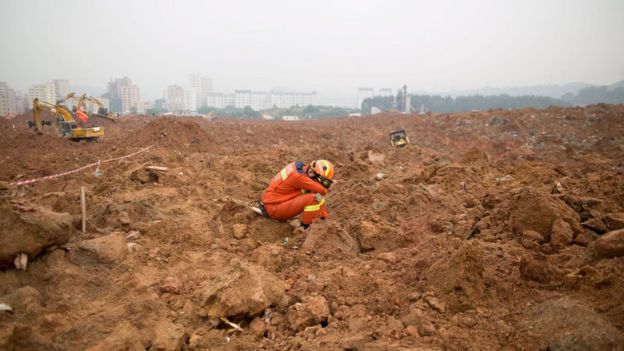 EPA
EPA
Ninety-one people are still missing after a landslide hit 33 buildings in the southern Chinese city of Shenzhen on Sunday.
Authorities said a huge man-made mound of earth and construction debris, piled up against a nearby hill over years, lost stability and collapsed, blanketing a vast area of 380,000 sq m (455,000 sq yards).
Tianjin explosions, Tianjin City, September 2015
Two massive explosions in the port of Tianjin, northern China, killed 173 people, left hundreds more injured and devastated large areas of the city.
The blasts took place at a warehouse housing large quantities of hazardous and flammable chemicals, which officials concluded had been improperly stored. Housing was also built closer to those facilities warehouses than the law should have allowed.
Car parts factory blast, Kunshan, Jiangsu Province, August 2014
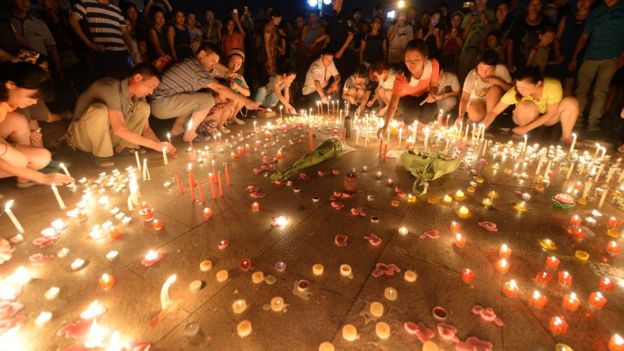 Getty Images
Getty Images
A metal dust explosion at a car parts factory in eastern China killed at least 75 people and injured more than 180, leaving many of them with severe burns.
Dust explosions occur when metallic particles contained in an enclosed space are ignited by a spark. It was a possibility the company had already been warned about, according to Chinese media reports.
Qingdao oil pipeline explosion, Qingdao, Shandong province, November 2013
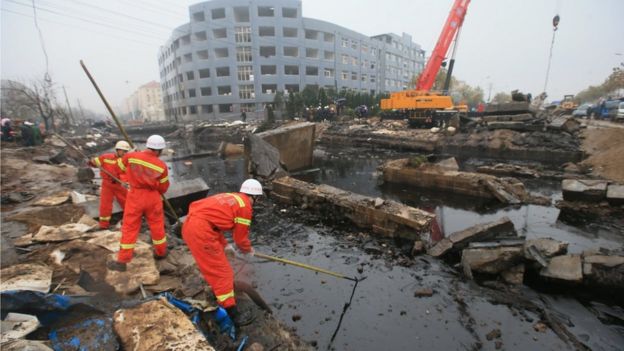 Getty Images
Getty Images
Sixty-two people were reported killed when an oil pipeline leaked and then caught fire and exploded.
The accident happened near a residential area, adding to the number of injured - at least 136 people.
Baoyuanfeng poultry factory fire, Dehui, Jilin Province, June 2013
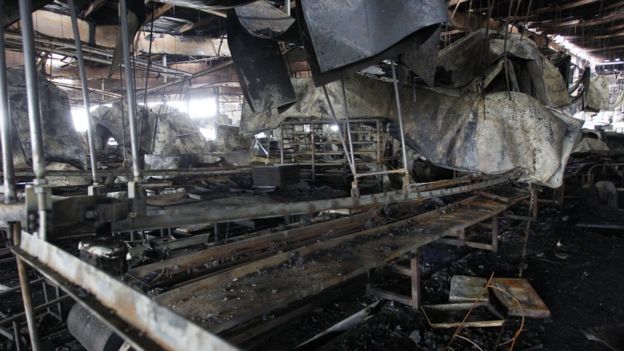 Getty Images
Getty Images
A fire at a poultry processing plant in China killed at least 119 people after explosions caused fires and a fatal crush, as workers tried to escape through the few exits that were not locked.
The blasts were blamed on an ammonia leak, which also forced the evacuation of local residents.
Tashan iron ore mine landslide, Tashan, Shanxi Province, September 2008 (and numerous other mine disasters)
 Getty Images
Getty Images
An industrial landslide engulfed a small mining community in central China, killing at least 254 people. It happened when a dam holding back sludge at an unlicensed iron ore mine burst after torrential rain.
China has an abysmal record on mine safety. That 2008 disaster was followed by amine blast in February 2009 in the same province, in which 73 people died. And in August 2007, mine shafts at Xintai mine in Shandong Province flooded after a nearby river burst its banks, killing at least 172 miners.
The situation has at least improved somewhat from the grim records it set in decades past: 684 people died in a methane explosion in Laobaidong colliery in 1960, and 1,549 people died in a massive blast in Benxihu coal mine in eastern Liaoning province in 1942.
Qinghe Special Steel Corporation disaster, Tieling, Liaoning Province, April 2007
 Getty Images
Getty Images
Thirty-two people died when a huge ladle transporting molten steel around the Qinghe Special Steel factory crashed to the ground.
Poor quality equipment and similarly substandard safety practices were blamed by the subsequent investigation.
Shenzhen toy factory fire, Kuiyong, Shenzhen, Guangdong province, November 1993
Eighty-seven people died and many others suffered horrific injuries when a fire broke out in a toy factory not far from Hong Kong. The disaster was made much worse by the fact that many exits were locked - a practice that has often exacerbated China's worst industrial disasters.
Until the Dehui poultry factory fire in June 2013, it was the worst factory blaze in China in living memory, and led to a public outcry.
Banqiao Dam tragedy, Ru River, Henan Province, August 1975
Said to be the world's worst-ever industrial disaster. Estimates vary but it has been said that around 100,000 died when the dam, overwhelmed by typhoon rains, burst.
Around the same number again are estimated to have been killed by subsequent famines and disease.
No comments:
Post a Comment
Comments always welcome!